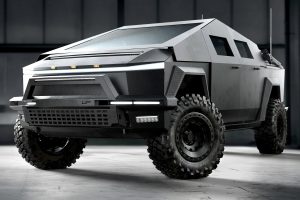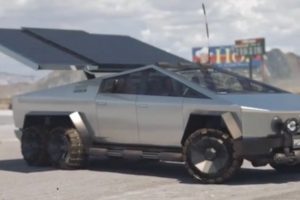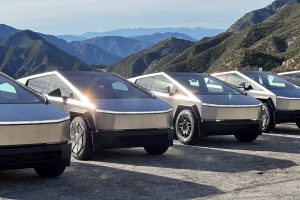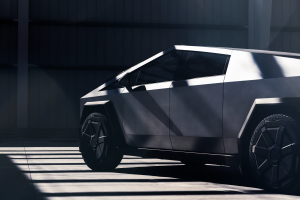- 🔌 Tesla’s Cybertruck bed power outlets can’t be used during non-Supercharging.
- ⚡ The same AC/DC converter is used for charging and onboard power supply.
- 🛠️ Using the converter for both functions simultaneously may be possible with development.
- 📚 The Cybertruck owner’s manual details when AC outlets are disabled.
- 👥 Tesla executives, including engineers, are encouraged to respond to customer inquiries on social platforms.
The Tesla Cybertruck represents a significant leap in automotive innovation, blending futuristic design with cutting-edge technology. However, as with any groundbreaking innovation, there are always nuances and quirks to explore. One such quirk that has captured the attention of Tesla enthusiasts and tech bloggers alike is the power dynamics of the Cybertruck’s bed outlets and charging systems. In this blog post, we delve into the intricacies of the Cybertruck’s power supply, analyze expert opinions, and provide insights into potential future developments.
Power Supply Quirks: The Non-Supercharging Dilemma
One of the main talking points among Cybertruck owners and enthusiasts has been the inability to use the truck’s bed power outlets during certain non-Supercharging scenarios, such as when plugged in at a campsite. This quirk arises from the Cybertruck’s innovative use of its AC/DC converter, which performs dual functions.
The Dual Role of the AC/DC Converter
The Cybertruck’s AC/DC converter is a sophisticated piece of technology designed to convert the standard AC from the grid into the DC power necessary to charge the vehicle’s high-voltage battery. Interestingly, this same converter also provides power to the truck’s onboard outlets. This dual functionality is at the heart of the current limitation: the converter can’t serve both roles simultaneously when not connected to a Supercharger.
Potential for Future Development
While currently a limitation, Tesla Lead Engineer Wes Morrill has indicated that future developments might allow for simultaneous use of the AC/DC converter for both charging and outlet power. This possibility opens up exciting prospects for Cybertruck owners, suggesting that Tesla’s ongoing innovations could enhance the utility and convenience of their vehicles even further.
- Development Challenges: Implementing this change would require overcoming technical challenges, including potential hardware adjustments and software updates.
- Impact on Consumers: Once achieved, this advancement could significantly benefit outdoor enthusiasts and those using the Cybertruck in remote locations where charging options are limited.
The Cybertruck Owner’s Manual: A Guiding Document
Tesla provides detailed information in the Cybertruck owner’s manual, explaining the scenarios when AC outlets may be disabled:
- Low Ambient Temperatures: Cold conditions may affect the functioning of the outlets.
- AC Charging Connection: If an AC cable is connected, but the vehicle is not actively charging, outlets may be disabled.
- Battery Charge Levels: A low-charged high-voltage battery can result in disabled outlets.
- GFCI or Overcurrent Issues: Safety mechanisms may trip, preventing outlet usage.
Tesla’s Customer Engagement: A New Era of Transparency
In line with Tesla’s innovative culture, the company encourages its executives and engineers to engage directly with customer questions and concerns through social platforms such as X (formerly Twitter). This strategy not only aids in quickly addressing technical queries but also strengthens the brand’s relationship with its community of owners and enthusiasts.
- Direct Communication: By responding personally to customer inquiries, Tesla engineers, including Wes Morrill, provide clarity and confidence to users, fostering a sense of community and transparency.
- Strategic Advantages: This approach helps Tesla stay agile, quickly addressing any issues and integrating user feedback into future product iterations.





